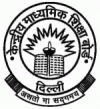(Important Questions) CBSE Class X Most Important Questions Science (Electric Current and Its Effect): 2011
Disclaimer: This website is NOT associated with CBSE, for official website of CBSE visit - www.cbse.gov.in
Most Important Questions
CBSE Class-X
Subject – Science
Topic-Electric Current and Its Effect
Q. 1. Why is Tungsten metal selected for making filaments of incandescent
lamp bulbs?
Q. 2. A torch bulb is rated at 3V and 600mA. Calculate it’s
a) Power
b) Resistance
c) Energy consumed if it is lighted for 4 Hrs.
Q. 3. Why pure iron is not used in making permanent magnets. Name
materials used for making permanent magnets. Describe how permanent magnets are
made electrically? State two examples of electrical appliances which use
permanent magnets.
Q. 4. Which will offer more resistance a 50W lamp or 25W lamp bulb and
how many times?
Q. 5. What are magnetic field lines? How is the direction of a magnetic
field lines at a point determined?
Q. 6. Draw two field lines around a bar magnet along its length on its
two sides and mark the field direction on these by arrows.
Q. 7. List any three properties of Magnetic lines of force.
Q. 8. Should the heating element of an electric iron be made of iron,
silver or Nicrome wire? Why.
Q. 9. A steady current is passed for 30minutes through two voltmeters
connected in series: a copper voltmeter [Cu cathode in copper sulphate
solution], and a silver voltmeter [Ag cathode in silver nitrate solution]. If
the mass of copper deposited in the first voltammeter is 21.17g, Calculate the
mass of silver deposited on the cathode in the other voltammeter. Given relative
atomic mass of Cu = 63.5 and Ag = 108.
Q. 10. State Fleming’s left hand rule. With a labeled diagram, describe
the working of an electric motor. What is the function of a Split ring
commutated in a motor?
Q. 12. What is the principle behind the working of an A/C generator? How
can we find the direction of the current in the armature of the generator?
Q. 13. If a wire is stretched to triple its original length, what happens
to its resistively?
Q. 17. State the rule to find the direction of magnetic field produced
around a current carrying conductor. State the characteristics of magnetic
force.
Q. 18. Give differences between magnetic and electric force.
Q. 19. Two identical resistors each of resistance 10 ohm are connected 1)
in series 2) in parallel, in line to a battery of 6volts. Calculate the ratio of
power consumed in the combination of resistors in the two cases.
Q. 20. What are the factors on which the strength of magnetic field
produced by a current carrying solenoid depends?
Q. 21. A bulb is rated at 220V- 100W. What is its resistance? Five such
bulbs burn for 4 hrs. What is the energy consumed? Calculate the cost if the
rate is 50paise per unit?
Q. 22. Express ohm’s law mathematically. Draw a circuit diagram to verify
Ohm’s law. Present the relationship between the voltage applied across a
conductor and the current flowing through it graphically.
Q. 23. State Right hand thumb rule for finding the direction of magnetic
field, around a current carrying straight conductor. How will the magnetic field
be affected :
a. On increasing the current
b. On changing the direction of flow of current.
Q. 24. What type of energy transformations take place in electric motor?
Name two devices which use electric motor as necessary component?
Q. 25. Two lamps rated 100W, 220V and 25W, 220V are connected in parallel
to 220V supply. Calculate the total current through the circuit.
Q. 26. A metallic coil connected to a 220V supply has a resistance of 110
ohm. How long will it take this coil to heat 1kg water from 2o0C to 700C? Assume
whole heat produced by coil is taken up by water. (Specific heat capacity of
water = 4186 )
Q. 27. Why is much less heat generated in long electric than in filaments
of electric bulb?
Q. 29. Should the heating element of an electric iron be made up of iron,
silver or nichrome wire?
Q. 30. For longer operational life why dry cells should be used
intermittently?
Q. 33. How does the resistance of wire change when 1) Its length is
doubled 2) Area is doubled?
Q. 35. An electric kettle rated 1000W, 220V is used to bring water at 20
degrees to its boiling point. If the kettle is switched on for 10 minutes.
Calculate:
a. The resistance of the element of kettle
b. Current flowing through the element
c. Mass of water in the kettle.
Q. 37. A copper wire has a diameter of 0.5mm and resistively of . How
much of this wire is required to make a 10 ohm coil?
Q. 38. A wire of resistance 5ohm is bent in the form of a closed circle.
What is the effective resistance between the two points at the end of any
diameter of the circle?
Q. 40. State Fleming’s Left and right hand rules. With a labeled diagram
describe the working of an electric motor. What is the function of commutate
rings in a motor?
Q. 41. What is the effect on resistively of a pure metal with the
increase in temperature?
Q. 42. What is a fuse? How does it function? Explain the terms: Short
Circuiting, Overloading and Van Allen belts.
Q. 43. How are ammeter and voltmeter connected in circuit? What are the
ideal resistances for these components?
